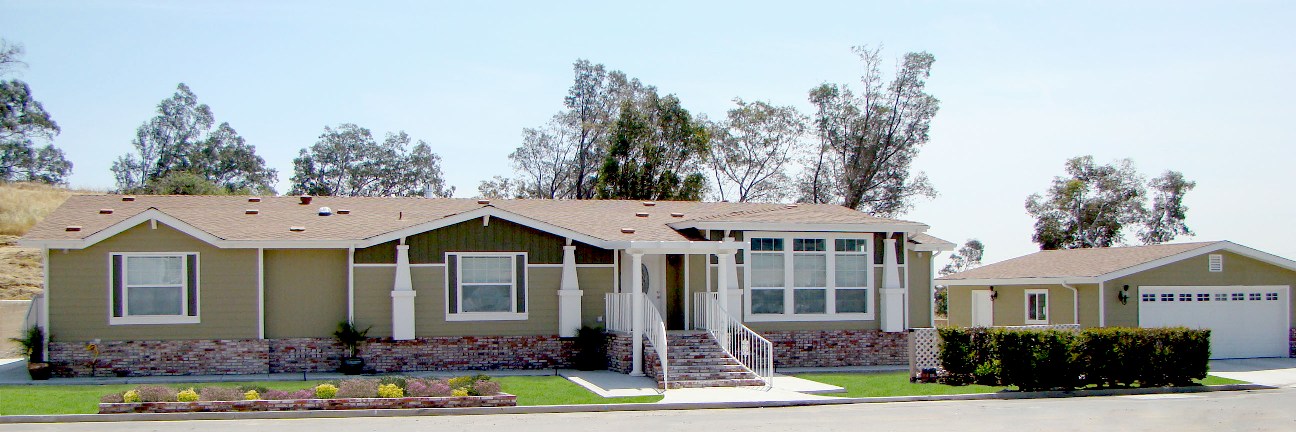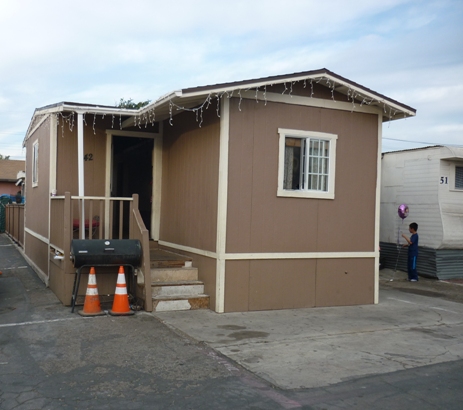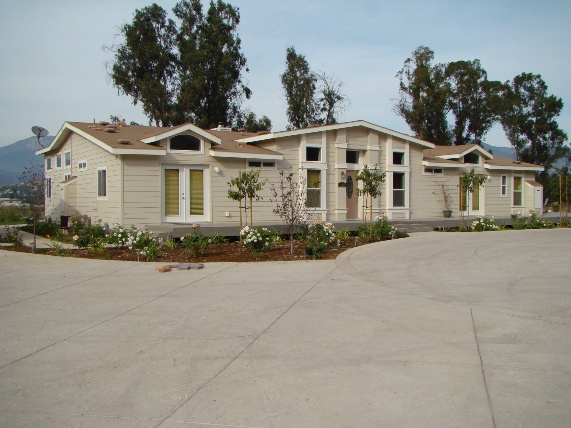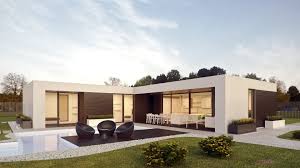Mobile vs. Manufactured vs. Modular Homes
What is the difference between these 3 types of pre-built, affordable homes?

When searching for a new home, there are a lot of terms for different home types. Most understand what a conventional, site built home is. When it comes to more affordable housing options, the terms mobile homes, manufactured homes, and modular homes are used, often interchangeably, which can get confusing. What is the difference between those 3 types of pre-built homes? Aren’t they essentially the same thing? Is there a difference?
Mobile, manufactured, and modular (also known as prefab or factory built) homes are technically all mobile or movable, but each has different degrees of mobility. Visually manufactured and modular homes once placed, can be mistaken for site built homes. And though manufactured homes are built in a factory, they cannot be called “factory built homes” where modular homes are called factory built. Confusing? Below we’ve broken down the differences in mobile, manufactured, and modular homes because there are major differences between all 3 of those types. We’ll talk about not just how they are built, but what building codes they must meet and inspections needed.
Below is an in depth look into the differences, but if you rather get the summarized version, skip to the bottom of the page and see the table.
Mobile Homes
Let’s start with the most common term – Mobile Homes or also referred to as ”trailer homes”.
In the early 1900s when work was hard to come by, workers would move to where the work was so they could support their family. Once that job was over, they would look elsewhere for work and often move again. With high demand for affordable housing and difficulty moving the whole family, the idea of a “mobile” home gained traction. Mobile homes made overall quality of life easier for working families.
When demand for production workers spiked 40 years later during WWII, factories started buying mobile homes in the masses to provide temporary housing for their workers. Then after the war was over, there was a shortage of affordable housing for all the returning veterans so even more mobile homes were produced.
To keep up with demand, mobile homes were cookie cutter in design. During the early stages of mobile homes and into the 1960s, mobile homes resembled modern day camper trailers in design. This kept them affordable and movable, but not so visually appealing to some potential buyers. It wasn’t until the late 1960s mobile homes started having larger square footage options and amenities to attract more home buyers.
Mobile homes had a bright future and were here to stay, or so people thought. Prior to the 1970s mobile homes had little to no oversight in how they were built, which, as you could imagine, led to a few issues. In 1974 Congress passed the National Mobile Home Construction and Safety
Standards Act also known as the HUD Code (HUD – Housing and Urban Development). This new HUD code was created to improve durability and quality of mobile homes. Not only was the HUD code implemented for mobile home design and construction, but also the body and frame, fire safety, plumbing and electrical, and thermal protection and energy efficiency. The HUD act took effect July 1, 1976 and the mobile home has not been built since.
The final blow to the mobile home was in 1980 when Congress mandated the term “mobile home” no longer be used in Federal laws and literature referencing homes built after 1976. The new term to be used was “Manufactured Home.” This term change was to emphasize that with the new HUD code now regulating how mobile homes were being built, manufactured homes were superior to the mobile home of yesteryear.
When you drill down to the bottom of it, the main difference between mobile and manufactured homes is how they are constructed. Mobile homes had no oversight in construction where manufactured homes had to and still are built to a Federal housing code to ensure safety, durability, and quality.
Below is an in depth look into the differences, but if you rather get the summarized version, skip to the bottom of the page and see the table.

Mobile Home
Manufactured Homes
Like mentioned above, manufactured homes are built to the Federal HUD Code and because of that they are exceedingly different and superior to mobile homes.
One of the biggest differences of mobile homes and modern manufactured homes is that manufactured homes are built just like conventional houses, except they are built in a factory. Manufactured homes use drywall and other materials just like a conventional home.
Manufactured homes are built in virtually any size but the most common sizes are single section, two sections (double wide), or three or more sections. And there are many options for square footage, floor plan design, decor, and exterior features based on what manufacturer the buyer chooses. Buyers can customize their home to meet their needs.
Where mobile homes were not inspected at all, now due to the HUD code manufactured homes are inspected by a third-party inspector (not an employee of the factory) for code requirements throughout the entire building process. Manufactured homes are inspected during different
phases of the building process so inspectors can see not only the finished product, but also inside the walls of the home to ensure the entire home is being built to code. Once the home arrives on the site to be set, another inspector will inspect the home at different points of setup to sure everything is kept up to standards.
Due to the HUD Code, manufactured homes are no longer as ‘mobile’ as mobile homes were. Manufactured homes require specialized, licensed contractors to set-up the home, but also to take the home apart for transportation. Plus, due to the weight of modern manufactured homes, a
professional transporting company needs to transport the home. Mobile homes were easily movable by the owner of the home, but today moving a manufactured home on your own would be very dangerous and not allowed.
There are many options for setting the home. The manufactured home can sit on piers or blocks with skirting placed around the perimeter to give the home a clean, finished look. Piers are the most common in mobile home parks. A manufactured home set on piers remains Chattel, or personal property.
As another option for homeowners, the home can be placed on a permanent foundation, essentially attaching it to the property. Permanent foundations are often used where the homeowner owns the land where the manufactured home is going to be placed. In most cases, once you attach the home to the permanent foundation, the home will become real property since the home would now be attached to the land.

Manufactured Home
Modular Homes
Modular homes can also be called prefab homes or factory built homes. Modular homes are just like mobile and manufactured homes in that they are built in a climate controlled factory, often in 2 sections but can be more. The sections are brought to the home site and then joined together.
The key differentiator between modular homes and manufactured homes is that modular homes don’t follow the HUD Code, but rather modular homes are built to all state, local, and regional codes necessary for where the final home site is. Modular homes follow the same codes as if a conventional home was to be built at the site.
Compared to manufactured homes, modular homes do have more options for style, shape, and layout. Modular homes could look just like manufactured homes in sections on a steel frame or modular homes could have no steel frame and travel on a flat bed truck to the site. In some designs, modular homes are delivered as just walls and need to be assembled on site like Lego’s. Have you seen cargo containers pieced together to create a home? Those would also be considered modular homes. Depending on the design, modular homes can cost much more than a manufactured home and in some cases even cost more than a site built home.

Modular Home
| Manufactured Homes | Modular Homes | Mobile Homes | |
|---|---|---|---|
| Built in Factory | Yes | Yes | Yes |
| Inspected in Factory | Yes | Yes | No |
| Inspected on Building Site | Yes | Yes | Depends on location |
| Significantly less expensive than site-built homes | Yes | Often Can Be | Yes |
| Takes significantly less time to build and install than site-built | Yes | Yes | Yes |
| Can potentially look the same | Yes | Yes | No |
| Can be built on steel frame | Yes | Yes | Yes |
| Can be built without steel frame | No | Yes | No |
| Types of Buildings | Single Family Homes | Single Family Homes Multi-family Homes Apartments Condominiums Hotels and Motels Dormitories | Single Family Homes |
| Where Can You Place | Where zoned for living | Where zoned for living | No longer built |
| Affordability | Budget Friendly | Usually less than Site Built | Very Budget Friendly |
| Factory Portion of House Building- Construction Codes and Standards | 1. Built to Federal construction codes from HUD 2. CCR Title 25*** 3. CFR 3280* 4. HUD approved HCD to oversee design & inspection per HUD direction | 1. Built to Local and State building codes based on home’s destination site. 2. CCR Title 24** 3. Factory design & inspection overseen by HCD NOT HUD | No building codes. |
| On-Site Inspections of Home Installation | For Park Communities, California HCD inspectors usually inspect homes. For Private Property local building inspectors are used. | Local Building Inspectors | Depends on location |
